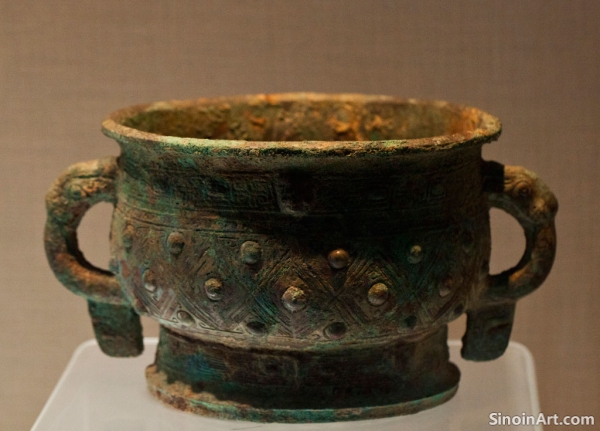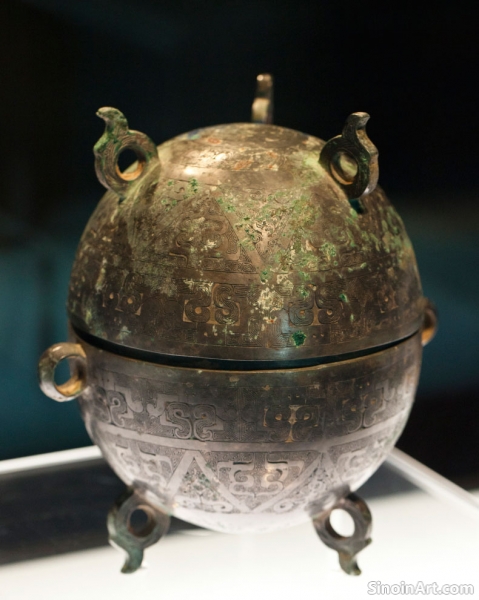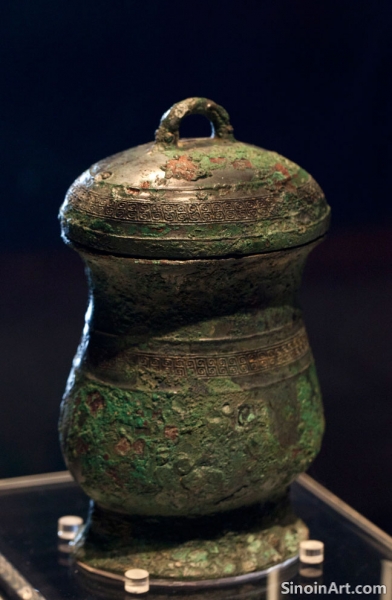The Inscribed Bronzes of the Zhou Dynasty: Narratives of History and Power
|
The Zhou Dynasty (c. 1046-256 BCE) marked a significant turning point in the history of Chinese bronze ware, characterized by the increasing prevalence of inscriptions on bronze objects. These inscriptions, which could range from a few characters to lengthy narratives, provide invaluable historical insights into the political, social, and religious practices of the time. They transformed the bronze ware from symbols of power into active communicators of historical events.  The inscriptions on Zhou bronze ware, often referred to as "bronze inscriptions" or "gold script" (jinwen), recorded important events, such as royal decrees, military victories, and ancestral dedications. These inscriptions often provided a detailed account of the circumstances, names, and dates associated with the creation of the bronze object. They are a vital source of historical data.  Unlike the primarily decorative emphasis in the Shang Dynasty, Zhou bronzes were increasingly associated with the establishment of lineage, the assertion of political legitimacy, and the recording of individual achievements. The practice of inscribing bronze objects with genealogical records and political declarations became a common practice. These inscriptions also established claims of power and territory.  The style of writing used in Zhou bronze inscriptions also evolved over time, reflecting the development of Chinese calligraphy. The early inscriptions often featured simple, archaic characters, while later inscriptions displayed more complex forms. The evolution of writing is clearly shown in the evolution of the inscriptions on the bronze. The inscribed bronzes of the Zhou Dynasty serve not only as powerful historical records but also as artistic treasures, showcasing the beauty and expressiveness of ancient Chinese writing. They connect us to the past through their stories, and they help us to fully understand the complexities of that era. The study of these artifacts provides unique insights into the history and culture of early China. |
Tag : Zhou Dynasty bronzes, bronze inscriptions, jinwen, Chinese calligraphy, historical records
Related information
- Bronze Ware and Ancient Chinese Beliefs About Immortality: The Quest for Everlasting Life
- Bronze Ware and the Transmission of Ancient Chinese Knowledge: Libraries, Archives, and Scholarship
- Regional Styles of Bronze Ware: Exploring the Diversity of Ancient China
- Regional Variations in Chinese Bronze Ware: Exploring Cultural Diversity
- The Production and Use of Bronze in Ancient Chinese Musical Instruments: Harmony and the Cosmos
This article explores the connection between bronze ware and ancient Chinese beliefs about immortality, highlighting how mirrors, vessels, and symbolic designs were used to ensure the well-being of the deceased, and to help with their passage to an eternal existence.
This article explores how bronze ware was used in the transmission of knowledge in ancient China, highlighting its role in creating records, tablets, archive labels, and other objects that helped to document, preserve, and disseminate information for future generations.
This article explores regional styles of bronze ware in ancient China, highlighting the distinct forms, designs, and techniques found in different areas, including the Central Plains, the Yangtze Valley, and the northern regions, revealing the diversity of ancient Chinese culture.
This article explores the regional variations in Chinese bronze ware, highlighting how different regions developed their unique styles, forms, and techniques, reflecting the diverse cultural landscape of ancient China.
This article explores the use of bronze in ancient Chinese musical instruments, highlighting the technical skill involved in their creation, the cosmological beliefs they represent, their role in ritual practices, and the interplay between music, spirituality, and the material world.